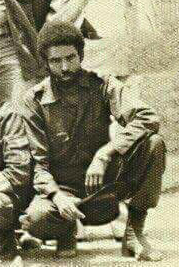|
1991 Zeila Incursion
The 1991 Zeila incursion ( Somali: ) was a Djiboutian-backed incursion during the Somaliland War of Independence led by the United Somali Front (USF), purporting to politically represent the Issa clans in the western Awdal region of Somaliland, with the goal of annexing the towns of Zeila, Loyada and Gerisa (Zeyla triangle) to Djibouti. A combined force of United Somali Front (USF) militia fighters mostly consisting of Issa from Djibouti and remnant Somalian regiments of the Darod clan entered Somaliland and temporarily took over parts of western Awdal, including Zeila, Loyada and Gerisa, before being routed by SNM forces. Background In the late 1980s, the Issa of Awdal region, led by Abdirahman Dualeh Ali, a former SNM leader, formed the United Somali Front (USF). The militia was discreetly supported and remotely controlled by current Djiboutian president Ismail Omar Guelleh, then head of the Djibouti secret service and the nephew of former then ruling president Hassan Gouled ... [...More Info...] [...Related Items...] OR: [Wikipedia] [Google] [Baidu] |
Somaliland War Of Independence
The Somaliland War of Independence () was a rebellion waged by the Somali National Movement (SNM) against the ruling military junta in Somali Democratic Republic, Somalia led by General Siad Barre lasting from its founding on 6 April 1981 and ended on 18 May 1991 when the SNM declared what was then northern Somalia independent as the Republic of Somaliland. The conflict served as the main theater of the larger Somali Rebellion that started in 1978. The conflict was in response to the harsh policies enacted by the Barre regime against the main clan family in Somaliland, the Isaaq, including a declaration of economic warfare on the clan-family. These harsh policies were put into effect shortly after the conclusion of the disastrous Ogaden War in 1978. As a direct response to the harsh policies enacted by the Barre regime against the Isaaq people, in April 1981 a group of Isaaq businesspeople, students, former civil servants and former politicians founded the Somali National Movemen ... [...More Info...] [...Related Items...] OR: [Wikipedia] [Google] [Baidu] |
Darod
The Darod (, ) is a Somali clan. The forefather of this clan is Sheikh Abdirahman bin Isma'il al-Jabarti, more commonly known as Darod. The clan primarily settles the apex of the Horn of Africa and its peripheries, the Somali hinterlands adjacent to Oromia (Ogaden), and both sides of the Kenya–Somalia border. Perry–Castañeda Library Map Collection – N.B. Various authorities indicate that the Darod is one of the largest Somali clan, whereas others suggest that the Hawiye is the largest Somali clan within Somalia, nevertheless, there is an available census that was conducted along the lines of clan affiliates. The Darod clan is the largest Somali clan family in the Horn of Africa. Origins According to early Islamic books and Somali tradition, Aqeel Abu Talib ibn Abd al-Muttalib Al-Qurashi descendant Abdirahman bin Isma'il al-Jabarti (Darod), a son of the Sufism, Sufi Sheikh Isma'il al-Jabarti of the Qadiriyyah order, fled his homeland in the Arabian Peninsula after an ar ... [...More Info...] [...Related Items...] OR: [Wikipedia] [Google] [Baidu] |
Military History Of Djibouti
The military history of Djibouti encompasses the major conflicts involving the historic empires and sultanates in the territory of present-day Djibouti, through to modern times. It also covers the martial traditions and hardware employed by Djiboutian armies and their opponents. In antiquity, the territory was part of the Land of Punt. The Djibouti area, along with other localities in the Horn region, was later the seat of the medieval Adal and Ifat Sultanates. In the late 19th century, the colony of French Somaliland was established following treaties signed by the ruling Issa Somali and Afar Sultans with the French. It was subsequently renamed to the French Territory of the Afars and the Issas in 1967. A decade later, the Djiboutian people voted for independence, officially marking the establishment of the Republic of Djibouti. Ancient and Medieval Ifat-Solomonic Wars Taddesse Tamrat explains Sultan Umar's military expedition as an effort to consolidate the Muslim territories ... [...More Info...] [...Related Items...] OR: [Wikipedia] [Google] [Baidu] |
1991 In Djibouti
It was the final year of the Cold War, which had begun in 1947. During the year, the Soviet Union collapsed, leaving fifteen sovereign republics and the CIS in its place. In July 1991, India abandoned its policies of dirigism, license raj and autarky and began extensive liberalisation to its economy. This increased GDP but also increased income inequality over the next two decades. A UN-authorized coalition force from 34 nations fought against Iraq, which had invaded and annexed Kuwait in the previous year, 1990. The conflict would be called the Gulf War and would mark the beginning of a since-constant American military presence in the Middle East. The clash between Serbia and the other Yugoslav republics would lead into the beginning of the Yugoslav Wars, which ran through the rest of the decade. In the context of the apartheid, the year after the liberation of political prisoner Nelson Mandela, the Parliament of South Africa repeals the Population Registration Act, ... [...More Info...] [...Related Items...] OR: [Wikipedia] [Google] [Baidu] |



